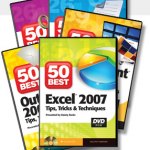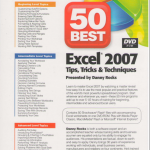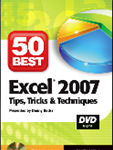In this video lesson, I share my tips for maintaining a consistent look when working with multiple worksheets in Excel. I will demonstrate how to:
- Group multiple worksheets for editing
- Make a copy of an Excel worksheet
- Use the Fill Across Worksheet tool – to update Contents or Formats or Both – for a Group of worksheets
In a professional setting, it is important to make a consistent presentation of your Excel worksheets. You want each worksheet in the group to use the same formatting styles, headers and formulas. The tips that I demonstrate will definitely save you time and help you to maintain a consistent look.
Learn how to “Master Excel in Minutes – Not Months!”
Invitation to Visit My New Secure Online Shopping Site
I have just opened my new, secure online shopping website. I invite you to visit http://shop.thecompanyrocks.com to see the new products that I have introduced in the year 2011.







How to Annotate Excel Worksheets with Comments and Images
Do you use “post-it” sticky notes to remind you how to do something? Do you ever lose your reminder notes? I know that I do! So that is why I like to annotate my Excel Worksheets with Comments – this way I have the notes properly located (in the worksheet) when I need them (to remember how to write a particular formula, etc.) the most!
In this lesson, I also show you how to add “pictures” inside your comments. This is a great tip for adding in a picture for a catalog or order form.
A question that I am frequently asked: “How do I print out my comments?” Watch this video to find out how to do this – there are a couple of “got’cha” steps involved.
The 50 Best Tips
Here are three ways to enter a new comment that is attached to a single cell:
You can edit your comments, re size the shape of your comments, hide your comments (only a “red triangle” shows in the cell until you hover near the cell), show your comments (individually or collectively), delete, clear and paste your comments. I cover each of these techniques in this video lesson. And more!
Watch this video in High Definition, Full Screen Mode on my YouTube Channel – DannyRocksExcels
Learn how to “Master Excel in Minutes – Not Months!”